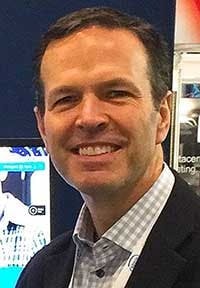Roundtable: The Role of Hyperscale Operators in Data Center Sustainability
Today we continue our Data Center Executive Roundtable, a quarterly feature showcasing the insights of thought leaders on the state of the data center industry, and where it is headed. In today’s discussion, our panel of experienced data center executives weighs in on the impact of hyperscale data centers on sustainability trends. Our panelists include John Sabey of Sabey Data Centers. Intel’s Jeff Klaus, Maricel Cerruti from Infrastructure Masons, Chatsworth’s Todd Schneider, Ben Stewart of NTT Global Data Centers, Nortek’s Kris Holla, and Michael DeVito of Iron Mountain.
The conversation is moderated by Rich Miller, the founder and editor of Data Center Frontier. Each day this week we will present a Q&A with these executives on one of our key topics. Today’s topic is how sustainability may advance in the data center sector in 2021.
Data Center Frontier: Hyperscale customers are more focused than ever on sustainability and climate change. Will this renewed focus drive meaningful change in the data center industry? If so, what might that look like?
MARICEL CERRUTI, Teladata and Infrastructure Masons.
Maricel Cerruti (Infrastructure Masons): I believe this renewed focus will bring a major change in the data center industry. In 2020, Infrastructure Masons held a summit that brought together digital infrastructure leaders from large hyperscale firms around the world, and Dean Nelson, Founder and Chairman, introduced IM’s new sustainability vision, “Every Click Improves the Future.” This vision encompasses four core values:
- Reduce emissions, starting with life-cycle carbon emissions.
- Eliminate waste, including energy, heat, water, unused capacity, unneeded redundancy, etc. Reduce, Reuse, Recycle!
- Be people positive, increase the quality of life in the communities where we locate.
- Compound our impact. Individuals and companies can do more working together.
Firms such as Google, Microsoft, and other large hyperscale firms in the community discussed five initiatives in achieving this vision.
- Unify the Industry
- Make Renewable Energy Available Everywhere
- Define a Sustainable Data Center Framework
- Drive Sustainability through Procurement
- Achieve Radical Efficiency through Innovation
As these are long term goals, I foresee the community will continue to invest in these initiatives in 2021 and beyond.
JEFF KLAUS, Intel
Jeff Klaus (Intel): Hyperscale will continue to be on the lookout for viable data center floor space. I think sustainability will continue to be one of the top criteria, but it will remain as one of a set of criteria that help the customer perform efficiently and responsibly.
Hopefully with the US administration change we see more substantial incentives or guidance which accelerates this trend.
Ultimately accelerated adoption will occur once the appropriate business cases are solved for ensuring that sustainability is the most profitable path.
MICHAEL DeVITO, Iron Mountain
Michael DeVito (Iron Mountain): I do feel that the broad additional focus on sustainability will drive meaningful change. Over the past several years Iron Mountain has invested heavily in wind farms and solar power plants in order to be powered by 100% renewable energy, so we clearly embrace the enhanced dedication on sustainability from hyperscale customers. We are also excited to see a positive shift from a good portion of our enterprise customers on this important topic as well.
As hyperscale workloads are driving significant new business growth in the industry, they also need to set the bar for the rest of the industry and help to drive change when referring to sustainability, which they are doing. In the recent past, the concept of data centers was not very well known with the public, but as the purpose and importance of the data center industry continues to come to the forefront, our industry’s commitment to leadership in the area of sustainability becomes more important than ever. That’s where we can drive change and become part of the solution and not the problem. We are actively carrying out and improving on a daily basis on multiple sustainability initiatives.
By having a global data center portfolio that runs 100% on renewable sources, where we continually optimize our PUE levels (including being one of the only industry providers to have ISO 14001 and ISO 50001 certification standards across our entire global platform), combined with our Green Power Pass product that helps our customers to offset their carbon footprint to meet their ESG goals, we feel that greening the grid is the only way forward. We will only applaud any initiative that our industry takes in the right direction, as we will keep doing the same.
KRIS HOLLA, Nortek Air Solutions
Kris Holla (Nortek Air Solutions): Data center operators and their customers are aligned on the issue of sustainability like never before. They both agree future infrastructures must reduce power and water usage to meet the public’s expectations and to reach their sustainability goals. The rise of hyperscale data centers by large cloud computing corporations, such as Google, Microsoft and Facebook have blazed the trail to sustainability capabilities. Colocation providers such as Equinix, Digital Realty and NTT are emulating the hyperscale centers’ sustainability measures.
Consequently, more colocation customers are evaluating their data center providers by sustainability, not just for cost savings that are passed down to them, but also to meet their own corporate environmental stewardship goals.
Innovations in liquid cooling the last couple of years are producing unprecedented power and water sustainability statistics. Statistics such as pPUE of 1.06 and WUE (L/kWh) as low as 0.09 have recently been recorded by hyperscale facilities using recently-developed variations on indirect evaporative cooling that abandon traditional energy and water-intensive direct expansion (DX) compressor and cooling tower technologies.
These statistics are only part of the solution toward reaching net-zero energy goals. New liquid cooling technology is also being combined with trends such as waste heat utilization (heat recovery), reclaimed water and renewable energy technologies of solar and wind as shown by Nortek StatePoint technology.
It’s an exciting time that the data center industry has never experienced before in terms of up to 20-percent power and 90-percent water conservation potential versus traditional liquid cooling technology.
JOHN SABEY, Sabey Corporation
John Sabey (Sabey Corporation): When it comes to the push toward sustainability, the momentum that exists will only continue to build. As global awareness rises, consumers increasingly make purchasing decisions based on their values; the companies vying for consumer business look to their vendors, including hyperscalers, to help them solidify their environmental bonafides.
As energy-intensive as data center deployments are, it stands to reason that corporations will turn a critical eye toward them with regards to sustainability. Data center providers will naturally respond with efforts to increase efficiency, adjustments to their energy mixes, and new options to help their customers meet these sustainability initiatives.
Headquartered in the Pacific Northwest, Sabey Data Centers enjoys inexpensive, renewable hydroelectric power that positions us well to supply abundant, low-cost green energy to our data centers in the region. We look to bring in renewable sources into our energy mix at our other campuses to both offer our customers and meet our own goals.
We continue to seek other renewable energy opportunities in locations that our customers need to be, and look forward to announcing some exciting plans surrounding sustainability and renewable power in 2021.
TODD SCHNEIDER, Chatsworth Products
Todd Schneider (Chatsworth Products): The data center industry has long and consistently focused on energy-efficient operational measures, particularly because power consumption improvements positively affect overall revenue and minimize environmental impacts.
This operational focus starts with renewable energy sources like solar and wind, to utilizing higher efficiency IT equipment and power supplies, to more effective ways to keep equipment cool. These would include aisle containment, close-coupled water-cooled solutions such as rear-door heat exchangers, direct-to-chip cooling or even immersion cooling.
Additionally, data center operators are exploring other aspects of sustainability: simplified product sourcing and operations, minimized and effective supply chains and reduced waste wherever possible. Being able to order a server cabinet with preinstalled elements, for example, can drastically reduce shipping and packaging waste.
While the focus has long been and will continue to be on operational efficiencies, the latest meaningful change is a concerted focus on reducing overall carbon footprint, including operational and embodied carbon. The embodied carbon of a building isn’t often thought of, but its components are typically items like those used to construct data centers. From sourcing to final production, building materials like cement and steel have a significant impact on the environment and carbon footprint.
Hyperscale data center operators in particular are starting to track the impact of these decisions more closely, including the sources of these items, and which require specific environmental product declarations from their suppliers. With companies like Microsoft expecting to be carbon negative by 2030, I expect this holistic view on carbon emissions by Hyperscalers to not only continue but become the norm moving forward.
BEN STEWART, NTT Global Data Centers, Americas
Ben Stewart (NTT Global Data Centers Americas): Setting aside political and personal views, if you subscribe to the Kaya identity (look it up here if you like), the only two viable levers that will influence reduced climate change are carbon and energy intensity. In other words, we must produce and use energy that is less carbon-intensive and develop and use less energy-intensive devices. Just as the pandemic drove the “digital shift,” there needs to be some forcing-function to ignite intense efforts to reduce carbon and energy intensity.
What will that forcing function be? We don’t pretend to know, but there will be one, and those in this industry who have been and continue to be focused on sustainability and climate change will be best positioned and prepared for that next evolution.
NEXT: What data center trends may surprise us in 2021.
Keep pace with the fact-moving world of data centers and cloud computing by following us on Twitter and Facebook, connecting with me on LinkedIn, and signing up for our weekly newspaper using the form below:
About the Author



